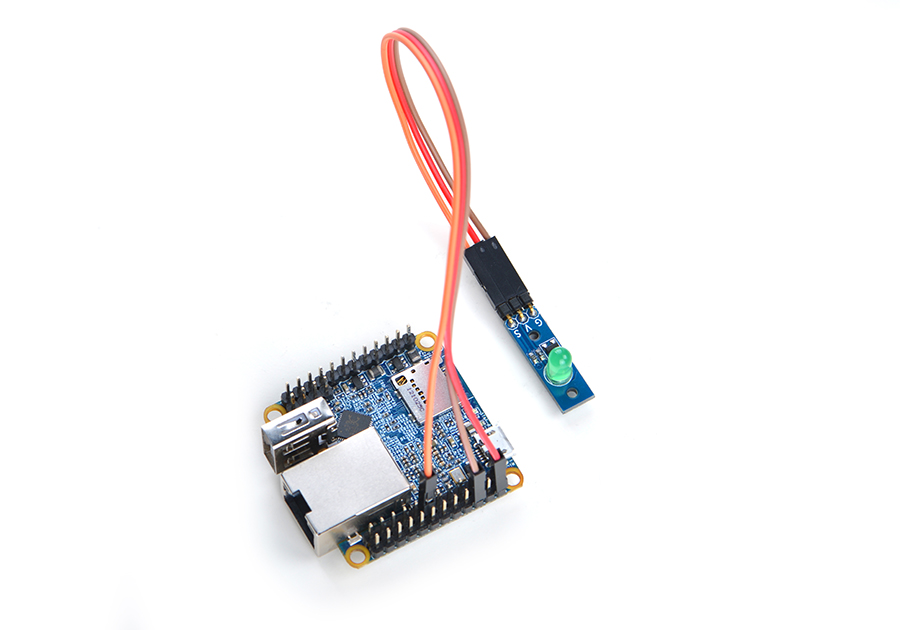RPi.GPIO : NanoPi NEO/NEO2/Air GPIO Programming with Python
Contents
[hide]1 Introduction to RPi.GPIO_NP
For users to easily access GPIO with python FriendlyElec integrated RPi.GPIO in the FriendlyCore images for the NanoPi H3/H5.
RPi.GPIO is a famous library in python for Raspberry Pi. FriendlyElec ported it to the NanoPi H3/H5's FriendlyCore images and renamed it as RPi.GPIO_NP.
Most RPi.GPIO_NP's APIs are the same as those of RPi.GPIO and you can refer to https://pypi.python.org/pypi/RPi.GPIO for more details.
2 Install RPi.GPIO_NP
The RPi.GPIO_NP library is integrated in all the FriendlyCore images that are and will be released after June 5, 2017. Therefore for images released after this date no installation is needed.
3 Code Sample with RPi.GPIO_NP
Here is code sample on how to access a NanoPi NEO2. A Matrix - LED is connected to a NanoPi NEO2 in the following hardware setup:

Pin Connection:
| Matrix-LED | NanoPi NEO2 |
| S | Pin7 |
| V | Pin4 |
| G | Pin6 |
The code sample shows how to make an LED blink in Python
Pin 7 is accessed in this code sample:
3.1 Code Sample in Python
Create a source file in Python:
vi led.pyType in the following lines:
#!/usr/bin/env python import RPi.GPIO as GPIO import time PIN_NUM = 7 GPIO.setmode(GPIO.BOARD) GPIO.setup(PIN_NUM,GPIO.OUT) while True: GPIO.output(PIN_NUM,True) time.sleep(1) GPIO.output(PIN_NUM,False) time.sleep(1)
Run led.py:
chmod +x led.py sudo ./led.py
The LED module will blink if you do everything right.
4 Update Log
4.1 June-7-2017
- Released English Version